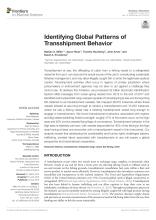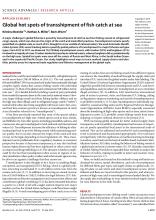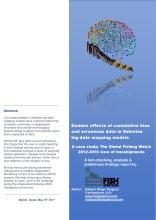Tracking Refrigerated Transshipment Vessels to Inform the FAO's PSMA
Port State Measurement Agreements (PMSA) aim to combat IUU fishing by bringing international parties to enact legislation and regulation on foreign vessels entering port. Parties to the PMSA, Port-States, are responsible for monitoring whether a vessel has engaged in IUU fishing. Reefers (because of their role in transshipment) pose a serious problem in effectively tracking and monitoring IUU fishing, leading to harmful marine biodiversity activity and human rights abuses such as seafood slavery. However, reefers are readily equipped with Automatic Identification System (AIS) Technology which, this paper shows, has proven to be an effective tool in MCS that PMSA parties can continue to use.
Topic
Language


